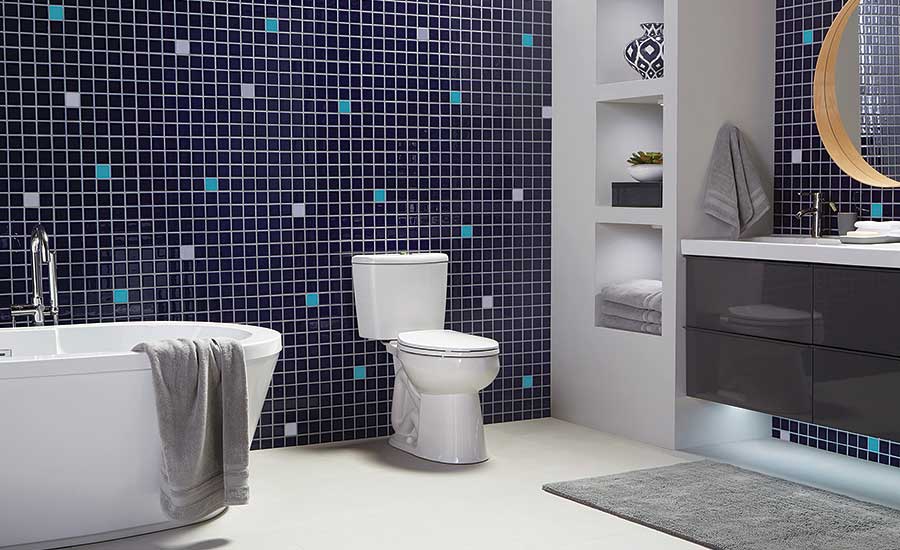Low-flow toilets have revolutionized the way we think about water conservation in our homes and businesses. By using significantly less water per flush, these toilets help conserve this precious resource and cut down on utility bills. However, like any other fixture, they require regular maintenance to function optimally. In this article, we will delve into how to clean a low-flow toilet effectively, ensuring it remains efficient and hygienic.
Understanding how to properly maintain and clean your low-flow toilet is crucial for the Industry QA audience, who are always looking for ways to improve efficiency and sustainability in their operations. Whether youre managing a large facility or maintaining your household, these insights will be invaluable.

Why Cleaning Is Crucial for Low-Flow Toilets
Before diving into the cleaning process, it's important to understand why regular cleaning is essential for low-flow toilets. These toilets are designed to use less water, which means that they might not flush away waste as forcefully as traditional toilets. This can lead to buildup and stains if not cleaned regularly.
Additionally, due to their design, low-flow toilets can sometimes experience clogs if waste and paper aren't flushed effectively. Regular cleaning helps prevent these issues and keeps your toilet functioning smoothly.
Tools and Materials Needed
To clean your low-flow toilet, you will need the following tools and materials:
- Toilet brush
- Non-abrasive cleaner or vinegar
- Baking soda
- Rubber gloves
- Microfiber cloth
These materials are generally safe for the environment and your low-flow toilet, ensuring that you dont inadvertently damage the fixture while trying to clean it.
Step-by-Step Cleaning Process
1. Prepare the Toilet
Begin by putting on your rubber gloves. Safety first! Lift the toilet seat and lid and ensure the area is clear of any personal items that might get in the way.
2. Apply the Cleaning Solution
Spray or pour a non-abrasive cleaner around the inside of the toilet bowl. If you prefer a natural solution, pouring a cup of vinegar into the bowl works effectively too. Allow the cleaner to sit for about five minutes to break down any grime.
For stubborn stains, sprinkle baking soda over the vinegar. The fizzing action will help lift stains without the need for harsh chemicals.
3. Scrub the Bowl
Using your toilet brush, scrub the inside of the bowl thoroughly. Pay special attention to any stained areas and under the rim, where deposits can accumulate.
4. Clean the Exterior
While the cleaner works inside the bowl, use a microfiber cloth dampened with your cleaning solution to wipe down the exterior of the toilet. This includes the tank, lid, and base. Keeping the exterior clean is equally important for maintaining hygiene.
5. Flush and Rinse
Once youve scrubbed the bowl and cleaned the exterior, flush the toilet to rinse away the cleaner and any loosened grime. Flushing also helps to ensure that your low-flow toilet is functioning correctly. To check for leaks or inefficiencies, consider using a leak detector to ensure no water is wasted.
Preventative Maintenance Tips
Maintaining a low-flow toilet goes beyond just cleaning it. Here are some tips to ensure lasting efficiency:
- Consider installing a high-efficiency toilet for better water conservation.
- Avoid flushing non-biodegradable items that can cause clogs.
- Regularly check for leaks, as even small leaks can lead to significant water waste. Utilize a smart leak detector for early detection.

FAQs
How often should I clean my low-flow toilet?
Ideally, you should clean your low-flow toilet at least once a week. This frequency helps prevent buildup and maintains optimal flushing performance.
Can I use bleach on a low-flow toilet?
While bleach can be effective, it's best to use non-abrasive cleaners or natural solutions like vinegar and baking soda to avoid damaging the toilet's components.
Why is my low-flow toilet clogging frequently?
Frequent clogs could be due to flushing inappropriate items. Ensure only toilet paper and human waste are flushed to prevent blockages.
To learn more about how you can maintain and maximize the efficiency of your plumbing systems, visit this guide on water-saving toilets.






